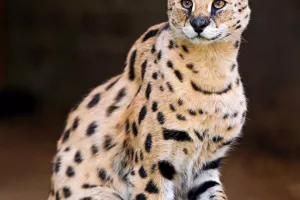Cats have 5 claws on each of their front feet and 4 claws on each of their rear feet. The fifth paw of the front foot is higher than the other four paws. It is like our thumb. Cat paws are made up of keratin, the main protein that makes up the epidermis and is also found in human nails.
The paw structure of cats and dogs is different, because cats rely on their claws to prey, while dogs use their mouths to bite their prey, so they have evolved different claws in the process of evolution.
The dog's claws are exposed and can be polished when walking and running, so the dog's claws are blunt. And dogs need this kind of "bluntness", otherwise, if the nails are too long, it will affect the dog's walking, and even pierce the skin of the bottom of the dog's feet in severe cases, causing infection.
Cats are the exact opposite. Claws are the "weapons" they rely on for survival, and they need to keep their claws sharp at all times in order to catch their prey.
Therefore, in the long evolution, the cat's claws have formed a mechanism that can expand and contract freely. Today we are going to introduce you to some knowledge points about cat claws.
Cat paws are very flexible. One of the reasons cats are good at climbing trees is because their front paws are turned inward, which helps them stay stable and makes them easy to climb.
Mute sound. In life, many people will find that the cat walks without making a sound, and suddenly appears behind you or in front of you, giving you a surprise. At this time, because in the long-term evolution process, the thick and sensitive claws of cats make their actions not make any noise, and they can go "hunting" without knowing it.
Help your cat clean. Hygiene is important to cat health. Studies have shown that cats spend a significant amount of time each day grooming themselves. Claws can help cats with daily cleaning tasks, such as getting rid of itchy skin, removing shed hair, and grooming messy body hair.
Neuroreceptors: Cats' claws are very sensitive and contain a large number of nerves that give the cat important information about the environment. It is because of these sensitive nerves that cats can walk smoothly on uneven surfaces. But because of this, their claws are sometimes extremely sensitive to temperature, pressure and pain.
Release hormonal information. Cats send their hormonal messages around in a variety of ways, in addition to the well-known way of urinating, but also in some unexpected ways, such as through their paws. Cats will release their own hormonal information through their paws. The moment you are photographed by the cat's paws, you carry the information of cat hormones on your body.
Cat paws are the perfect grooming tool. Cat paws can help cats clean hard-to-reach areas behind their ears, chin, neck, and face. They do this by first licking their paw a few times and then wiping it in those areas where they can't lick directly. Kittens usually start grooming with their front paws before they are 4 weeks old.


